Understanding Your Upper Teeth Retainer
Congratulations! You’ve achieved a beautiful, straight smile. Now, the key to keeping those results for a lifetime is your retainer. An upper teeth retainer is a custom-made appliance designed to hold your upper teeth in their new, corrected position after your orthodontic treatment is complete.
Why is a Retainer Necessary for Your Upper Teeth?
After your braces or clear aligners are removed, the bone and tissues surrounding your teeth are still adapting to the new positions. Your teeth have a natural tendency to shift back toward their original spots—a process called relapse. An upper retainer’s primary function is to:
- Prevent Relapse: It locks your teeth into their perfect alignment.
- Stabilize the Bite: It allows your jawbone and gums time to solidify around the newly aligned roots.
- Preserve Your Investment: It protects the time and money you invested in your orthodontic treatment.
Types of Upper Teeth Retainers
1. Removable Retainers
These retainers can be taken out for eating, brushing, and flossing. They are a very common choice for the upper arch.
| Type | Description | Pros | Cons |
|---|---|---|---|
| Hawley Retainer | A classic design with a plastic or acrylic plate that rests on the roof of your mouth and a thin metal wire that wraps around the front of your teeth. |
|
|
| Clear Plastic Retainer (Essix/Vivera) | A transparent, thin plastic tray that is molded to fit perfectly over your entire set of teeth, similar to an invisible aligner. |
|
|
2. Fixed (Permanent) Retainers
A fixed upper retainer consists of a thin, solid or braided wire that is custom-fitted and cemented (bonded) to the back surface (lingual side) of your upper front teeth.
Pros
- Continuous Retention (24/7 wear).
- Not Visible to others.
- No Compliance Issues: You can't forget to wear it or lose it.
Cons
- Harder to Clean: Requires special tools (like a floss threader) to clean around the wire.
- Risk of Breakage: The bond can break, requiring an emergency repair.
- May be less ideal for upper teeth than lower due to bite interference.
How Long Do I Need to Wear My Upper Retainer?
Your orthodontist will recommend the best type of retainer for your upper arch based on your individual needs and lifestyle. Retainers fall into two main categories: removable and fixed.
- Full-Time Wear (Initial Phase): For the first 3 to 6 months after your braces are removed, you will typically be instructed to wear your removable retainer for 22 hours a day—only taking it out to eat, drink anything other than water, and clean your teeth.
- Nighttime Wear (Transition Phase): After the initial phase, your orthodontist will likely transition you to wearing your removable retainer only at night while you sleep. This phase can last for several years.
- Long-Term/Indefinite Retention: Because teeth can continue to shift subtly throughout life due to natural aging and growth, most orthodontists recommend lifelong wear of a retainer, even if it's just a few nights a week, to guarantee the stability of your smile.
Key Rule: If your removable retainer feels tight, it means your teeth have shifted. Go back to wearing it full-time until it feels comfortable again.
Retainer Care and Maintenance
- Full-Time Wear (Initial Phase): For the first 3 to 6 months after your braces are removed, you will typically be instructed to wear your removable retainer for 22 hours a day—only taking it out to eat, drink anything other than water, and clean your teeth.
- Cleaning (Fixed): You must carefully floss underneath the wire of your fixed retainer daily using a floss threader or special orthodontic floss to prevent plaque and tartar buildup.
- Handling: Never wrap your removable retainer in a napkin—it's the most common way they get lost or thrown away!
- Heat: Keep all retainers (especially clear plastic ones) away from hot water, dashboards, or other heat sources, as this can permanently distort the shape.
- Appointments: Continue to see your orthodontist for your prescribed retention check-ups to ensure your retainer is fitting correctly and your teeth are stable.

